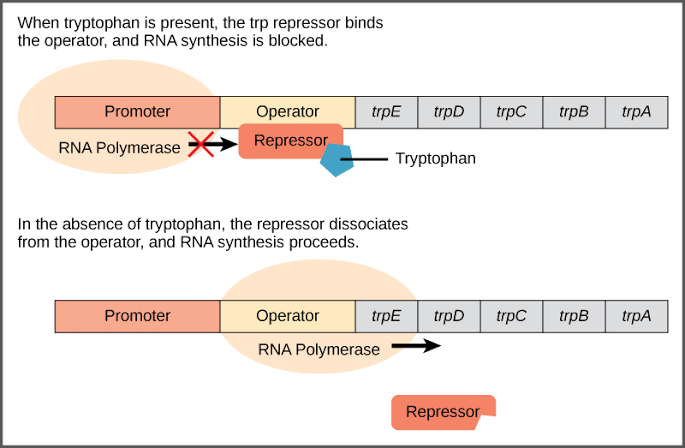
Prokaryotic Gene Expression System
Prokaryotic gene expression systems are fundamental mechanisms by which bacteria and archaea regulate the transcription and translation of their genes. These systems are characterized by their simplicity compared to eukaryotic systems, as prokaryotes lack a nucleus and many of the complex regulatory elements found in eukaryotes.
Key Features of Prokaryotic Gene Expression
- Transcription and Translation Coupling: In prokaryotes, transcription (the process of synthesizing RNA from DNA) and translation (the synthesis of proteins from RNA) occur simultaneously in the cytoplasm. This allows for rapid response to environmental changes.
- Operons: Many prokaryotic genes are organized into operons, which are clusters of genes transcribed together under the control of a single promoter. This arrangement allows for coordinated regulation.
- Regulatory Elements: Prokaryotic gene expression is regulated by various elements such as promoters, operators, and repressors. The binding of these regulatory proteins can either enhance or inhibit transcription.
- Sigma Factors: These are proteins that bind to RNA polymerase and direct it to specific promoters, facilitating the initiation of transcription.
Gene Expression from Constitutive and Inducible Promoters
Promoters are DNA sequences that initiate transcription. They can be classified into two main types: constitutive and inducible promoters.
1. Constitutive Promoters
- Definition: Constitutive promoters are always active, leading to continuous expression of downstream genes regardless of environmental conditions.
- Examples: The lac promoter (P_lac) in E. coli is often used in cloning vectors because it drives consistent gene expression.
2. Inducible Promoters
- Definition: Inducible promoters require specific signals or conditions to activate gene expression.
- Mechanism: These promoters often respond to external stimuli such as the presence of certain substrates or stress conditions.
- Examples: The trp promoter (P_trp) can be activated in the presence of tryptophan, while the IPTG-inducible lac promoter can be activated by adding IPTG, a lactose analog.
Fusion Proteins
Fusion proteins are hybrid proteins created by joining two or more genes that originally coded for separate proteins.
Characteristics
- Purpose: Fusion proteins can enhance protein solubility, facilitate purification processes, or provide functional domains from different proteins.
- Common Tags: Common fusion tags include His-tags for purification via affinity chromatography and GFP (Green Fluorescent Protein) for visualization.
- Applications: They are widely used in research for studying protein interactions, localization, and function.
Increasing Protein Stability
Protein stability is crucial for maintaining functionality during storage and use in various applications.
Strategies to Enhance Stability
- Mutagenesis: Site-directed mutagenesis can introduce stabilizing mutations that enhance folding or reduce degradation.
- Chemical Modifications: Post-translational modifications like glycosylation can protect proteins from proteolytic enzymes.
- Chaperones: Co-expressing molecular chaperones can assist in proper folding and prevent aggregation.
DNA Integration into the Host Chromosome
Integrating foreign DNA into a host chromosome is essential for stable gene expression in many applications.
Mechanisms
- Homologous Recombination: This natural process allows for precise integration at specific genomic locations based on sequence similarity.
- Transposons and Integrative Plasmids: These tools facilitate random integration into the genome but may lead to variable expression levels due to position effects.
Increasing Extra-cellular Secretion
Enhancing extracellular secretion is vital for efficient protein production in biotechnological applications.
Approaches
- Signal Peptides: Using strong signal peptides directs proteins through the secretory pathway.
- Host Strain Optimization: Engineering host strains with enhanced secretion capabilities improves yield.
- Culture Conditions: Optimizing growth media and conditions can also increase secretion rates.
Metabolic Load
Metabolic load refers to the burden placed on a cell’s resources when expressing recombinant proteins.
Implications
- Resource Allocation: High levels of recombinant protein production divert resources away from essential cellular functions, potentially leading to reduced growth rates.
- Toxicity Effects: Accumulation of misfolded or toxic proteins can stress cellular machinery, further impacting growth negatively.
General Problems with the Production of Recombinant Eukaryotic Proteins in Prokaryotes
Producing eukaryotic proteins in prokaryotic systems presents several challenges:
- Post-translational Modifications (PTMs): Prokaryotes lack the machinery necessary for many PTMs such as glycosylation, phosphorylation, or methylation that are critical for eukaryotic protein function.
- Protein Folding Issues: Eukaryotic proteins may misfold when produced in prokaryotes due to differences in chaperone systems.
- Inclusion Bodies Formation: Many eukaryotic proteins aggregate into insoluble inclusion bodies when expressed in bacteria, complicating purification efforts.
- Codon Usage Biases: Differences between codon usage preferences in prokaryotes versus eukaryotes can lead to inefficient translation or truncated products.
In summary, while prokaryotic systems offer advantages such as rapid growth and ease of manipulation for gene expression studies, they also present significant challenges when producing complex eukaryotic proteins due to differences in cellular machinery and post-translational processing requirements.







